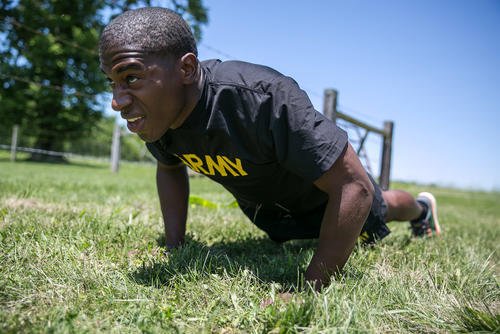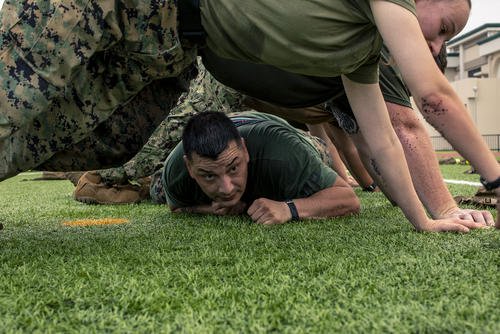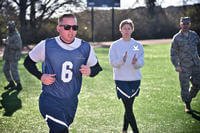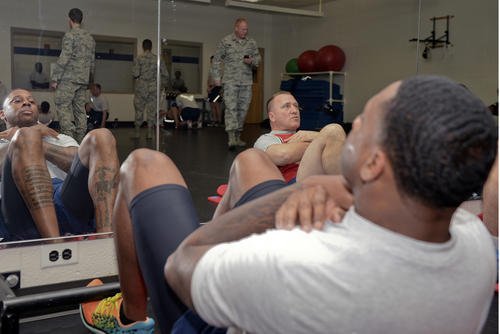Training to run faster is a common issue for people serving in the military. The timed runs in semi-annual fitness tests are challenging, especially for military members who consider 1.5-2 miles "long distance." This can include people with athletic backgrounds in sprinting (such as track or football) or those who do not run. How to train for these 1.5- to 2-mile fitness tests largely depends on the military member’s body type and athletic history.
Here is a question about two such ways to train for running more miles:
Stew, when it comes to running, is it mainly the volume of running (miles per week) to get faster in a 2-mile time, or the quality of runs over the volume of runs? Thanks, Frank
Read Next: Are You Made for the Military? Traits That Predict Basic Training Success
The best answer is a mixture of both. However, if you are new to running, you may not be able to handle a high volume of running until you progressively build up to a level considered high volume, which can take months. Also, high volume is relative. For someone who does not run, 10 miles a week would be considered high volume and is likely to cause overuse-type injuries in the feet, shins, knees and hips.
For this type of military member, I recommend limiting running to every other day, with nonimpact cardio activities mixed in on the days in between. Biking, rowing or elliptical training are good nonimpact cardio options to help you build an aerobic base without the impact pains of too many miles in your first month of running.
For someone who runs about 5-10 miles per week, adding more volume in the first week of training is fine, but keep it to a maximum of 12-15 miles per week for a few weeks. This can include a mixture of steady-paced running (long, slow distances) of 3-4 miles on one day, but on other running days, you should start to understand how your goal pace feels.
To determine your goal pace, assess yourself and use the timed run as one of your weekly workouts. For example, completing 2 miles in 15 minutes is a 7:30 mile pace. Your next goal pace is to try to break a 7-minute mile pace during your interval running workouts, such as the following:
Repeat 6-8 times.
- Run 400 meters at goal pace (1:40-1:45)
- Rest with a 100-meter walk.
This pace is set for this time, and your goal is to learn what a pace between a 6:30 and 7:00 mile feels like. This range is 30-60 seconds faster than your current pace. Your goal pace is always going to be 30-60 seconds faster (per mile) than your current pace. You can increase the distance of your intervals to 800 meters and 1,600 meters as you improve your ability to maintain the pace.
Try a running schedule of two days running (one easy/one goal pace), one day off or mobility day, and two days running. This schedule is great for new runners, but you can also progress into more running days per week as you increase your ability.
When you reach your pace, it is up to you either to maintain or improve and shoot for the 6-minute mile pace. Either way, the process is the same, but you can add more miles per week as you progress with your weekly running plan. The safe increase of volume per week is 10%-15% of your current weekly volume.
In 4-6 weeks, you can see that you can more than double your current monthly volume by this gentle and logical progression. By following a progression like this, you will reduce the risk of typical overuse injuries found in those who run too much, too fast, too soon, too often when starting their running program.
For more running faster ideas, check out the Military.com Fitness Section, which has hundreds of articles on topics such as exercise, sleep, nutrition, stress relief and more.
Want to Learn More About Military Life?
Whether you're thinking of joining the military, looking for fitness and basic training tips, or keeping up with military life and benefits, Military.com has you covered. Subscribe to Military.com to have military news, updates and resources delivered directly to your inbox.


















